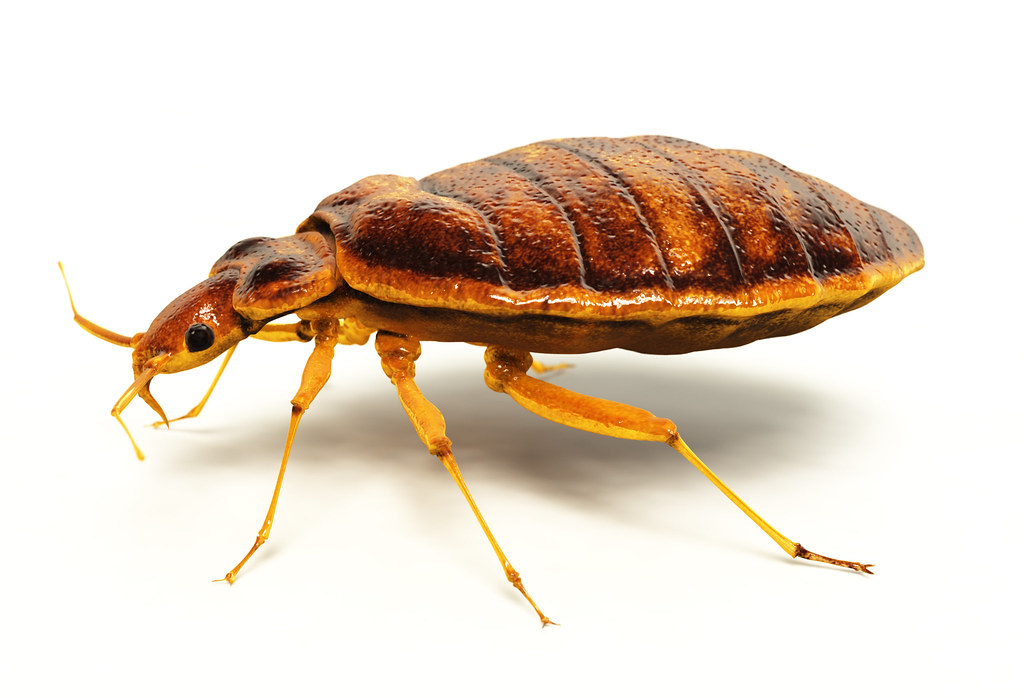Exploring the Science Behind Bed Pest Warm Treatments as a Sustainable Bug Monitoring Method
In the world of bug management, the mission for efficient and sustainable services remains a continuous search. One such method that has gained traction over the last few years is using heat treatments to combat bed pest infestations. By using the scientific research behind thermal fatality points for these relentless insects, warmth treatments provide an encouraging alternative to typical chemical-based approaches. The details of just how heat properly gets rid of bed pests and the more comprehensive effects for lasting pest monitoring practices make this a topic worth checking out additionally.
Bed Bug Heat Therapy Refine

Thermal Fatality Point for Bed Pests
Revealing bed insects to elevated temperature levels beyond their thermal tolerance variety is critical for accomplishing efficient elimination in warm treatment processes. The thermal fatality factor for bed insects refers to the temperature at which these parasites can not survive. Study shows that bed bugs start to die when subjected to temperature levels over 113 ° F(45 ° C) for a continual duration. As the temperature enhances, so does the mortality rate of bed insects. At around 118 ° F(48 ° C ), bed insects begin to die quickly, with a mortality price of nearly 99% within minutes of exposure. This shows the sensitivity of bed pests to high temperatures and highlights the effectiveness of warm treatments in removing invasions. By getting to and maintaining temperatures over the thermal fatality point for bed pests, pest administration professionals can guarantee thorough removal of bed pest populations, including hard-to-reach areas where chemical treatments might be much less efficient. Recognizing the thermal fatality point for bed insects is crucial for implementing effective warmth therapy methods and achieving lasting bug management outcomes.
Benefits of Warmth Treatments
Having developed the important thermal death point for bed bugs, it is critical to now check out the significant benefits that warmth treatments offer in effectively eradicating these resilient insects. When contrasted to traditional chemical approaches, warmth treatments existing a number of crucial benefits. Among the key benefits is that heat can permeate deep into cracks and gaps where bed bugs hide, making sure that even the most hard-to-reach locations are heated up to dangerous temperature levels. This comprehensive method not just kills live insects but additionally targets bed insect eggs, preventing future infestations.
Furthermore, warmth therapies are non-toxic and eco-friendly, making them a lasting pest management method. Unlike chemical pesticides, heat treatments do not leave hazardous deposits that can posture risks to human health and wellness or the setting. This aspect is specifically vital in delicate settings such as more hospitals, schools, and residential areas where chemical use might not be preferable.
In addition, warm treatments have a high success rate in eliminating bed bug problems in a solitary therapy, minimizing the requirement for several check outs and reducing disruption to occupants. This performance not just saves money and time but additionally supplies satisfaction to those handling bed pest troubles.
Efficiency of Heat Therapy

Research researches have continually demonstrated the performance of heat therapies in achieving a high price of bed pest mortality. Effectively conducted warm treatments can reach all the have a peek at this site gaps and splits where bed insects might be harboring, making sure a comprehensive technique to elimination. Additionally, warmth therapies have the included advantage of eliminating bed bug eggs, which are commonly resistant to standard chemical therapies. Overall, the efficiency of warm therapies in useful link getting rid of bed bug invasions makes them a trustworthy and lasting bug monitoring approach.
Sustainable Insect Administration Advantages
Executing sustainable parasite administration methods uses long-term benefits for both the atmosphere and public health. By utilizing approaches such as warm treatments for parasite control, we can minimize the reliance on hazardous chemical pesticides that can have adverse results on environments and human health - exterminator near me. Lasting insect management methods help in maintaining biodiversity by targeting particular pests without hurting non-target organisms, consequently maintaining a well balanced community
In addition, sustainable parasite management techniques contribute to the total health and health of the public. By lessening exposure to hazardous chemicals made use of in conventional bug control methods, warm therapies provide a much safer choice for insect monitoring in residential, industrial, and public rooms. This decrease in chemical usage likewise aids in preventing pesticide deposits from infecting dirt, water, and air, safeguarding environmental high quality.
Verdict
Finally, bed bug warm therapies have actually been revealed to be a sustainable and effective insect administration approach. The thermal fatality factor for bed bugs makes them vulnerable to warm treatments, which have many benefits over typical chemical therapies. The performance of warmth therapies in eliminating bed bug infestations while reducing environmental impact highlights the potential of this technique as a sustainable service for bug control.
The bed insect warm treatment process involves increasing the temperature within infested areas to a degree that properly removes bed pests and their eggs. By getting to and preserving temperatures above the thermal death factor for bed pests, parasite monitoring experts can make sure detailed elimination of bed bug populations, consisting of hard-to-reach locations where chemical therapies may be less reliable. One of the key benefits is that warm can penetrate deep into cracks and holes where bed bugs hide, ensuring that also the most hard-to-reach locations are heated up to lethal temperature levels. Unlike chemical therapies that may leave behind resistant populaces, warm treatments offer a safe and eco friendly solution that can pass through deep into furnishings, wall surfaces, and other hard-to-reach areas where bed insects hide.
The thermal death factor for bed pests makes them prone to heat therapies, which have countless advantages over traditional chemical therapies.